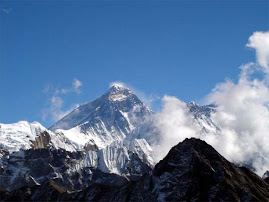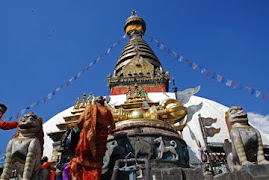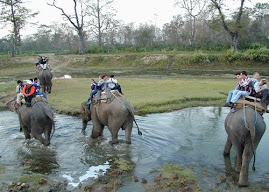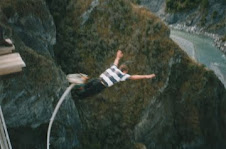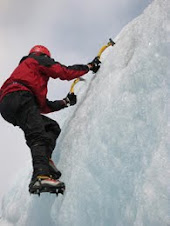 Custom Formalities
Custom FormalitiesAll baggage must be declared and cleared through the customs on arrival at the entry. Personal effects are permitted free entry.Passengers arriving at Tribhuvan International Airport (TIA) without any dutiable goods can proceed through the Green Channel for quick clearance without a baggage check. If you are carrying dutiable articles, you have to pass through the Red Channel for detailed customs clearance.
Import:Apart from used personal belongings, visitors are allowed to bring to Nepal free of duty cigarette (200) or cigars (50), distilled liquor (one 1.15 liter bottle), and film (15 rolls). You can also bring in the following articles free of duty on condition that you take them out with you when you leave: binocular, movie or video
camera, still camera, laptop computer, and portable music system.
Export:The export of antiques require special certification from the Department of Archeology, National Archive Building, Ram Shah Path, Kathmandu. It is illegal to export objects over 100 years old like sacred images, paintings, manuscripts that are valued for culture and religious reasons. Visitors are advised not to purchase such items as they are Nepal's cultural heritage and belong here.
 Foreign Currency & Credit Cards
Foreign Currency & Credit CardsPayment in hotels, travel agencies, and airlines are made in foreign exchange. Credit cards like American Express, Master and Visa are widely accepted at major hotels, shops, and restaurants. Remember to keep your Foreign Exchange Encashment Receipt while making foreign exchange payments or transferring foreign currency into Nepalese rupees. The receipts may be needed to change left-over Nepalese Rupees into hard currency before leaving the country. However, only 10 percent of the total amount may be converted by the bank. ATM is widely in use in Kathmandu.
Major banks, hotels, and the exchange counters at Tribhuvan Airport provide services for exchanging foreign currency.
Exchange rates are published in English dailies such as The Rising Nepal, The Kathmandu Post and The Himalayan Times. Nepalese Rupees are found in denominations of 1000, 500, 100, 50, 20, 10, 5, 2 and 1. Coins are found in denominations of 10, 25 and 50 paisa. One rupee equals 100 paisa.
Travel InsuranceA travel insurance policy that covers theft, loss and medical treatment is recommended. Make sure the insurance also covers the activities that you will be undertaking during your stay in Nepal such as trekking or river rafting.
ImmunisationNepal does not require any particular immunisation for your visit. Vaccinations for Cholera, Meningitis, Tetanus & Diphtheria, Typhoid and Gamma globulin should be considered for your trip. Please consult your physician and get a complete check-up before your departure.
General KnowledgeTo make yourself an expert on health aspects of Nepal would not only be difficult but also troublesome. However, one should have some knowledge on Altitude Sickness (AMS), Diarrhoea, Giardia, Dysentery, cholera, Hepatitis Rabies, Typhoid, Tetanus, Meningitis Diphtheria, Malaria and HIV/AIDS Common sense can often save lives. Prevention, the Best Medicine care in what you eat and drink is the most important health rule. The number one rule is don't consume the water including ice. Reputable brands of bottled Water or soft drinks are generally fine. Take care with fruit juice, particularly if water may have been added. Milk should be treated with care, as it is often un-pasteurized. Boiled milk is fine if it is kept hygienically and yoghurt is usually good. Tea or coffee should also be OK since the water would have been boiled. Salads and fruit should be washed with purified water or peeled where possible. Ice cream is usually OK if it is a reputable brand name. But beware of ice cream that has melted and been refrozen.
Thoroughly cooked food is the safest but not if it has been left to cool. Stomach upsets are the most likely travel health problem but the majority of these upsets will be relatively minor. Wash your hands frequently, as it's quite easy to contaminate your own food. You should clean your teeth with purified water rather than straight from the tap. Avoid climatic extremes; keep out of the sun when it is hot, dress warmly when it is cold. Avoid potential diseases by dressing sensibly. You can get worm infections through bare feet. Try to avoid insect bites by covering bare skin when insects are around, by screening windows or by using, insect repellents.
skin when insects are around, by screening windows or by using, insect repellents.
 Entry Procedure And Visa Rule
Entry Procedure And Visa Rule Gratis visa for all tourists who visit Nepal for 3 days or less.
Gratis visa for tourists of SAARC countries and People's Republic of China.
Visa Fee:
Single entry - US$ 30 days for 60 days
Multiple entry - US$ 50 + US$ 30.
Visa will be extended subsequently for 30 days each upon payment of US$ 30 for a maximum period of 150 days in a visa year (Jan-Dec). Visa can be obtained either on arrival in Nepal or from Nepalese Embassy or Consulate or other Mission offices abroad. Two passport size photographs required. Indians do not require visa to visit Nepal. However, they require to be in possession of any one of the following documents while travelling between the two countries.
* Valid national passport
* Photo identity card issued by the government of India/any State Government or Union Territory/Administration in India/Identity Cards issued by the Election Commission of India. (Except Tatkal Identity Cards issued by the Ministry of Railways).
* Children between 10-18 years age group are allowed to travel by air on the strength of a passport or photo identity card issued by the Principal of their school or college.
* Emergency Certificate issued by Embassy of India, Kathmandu to Indian nationals in case of emergent conditions.
* Children up to the age of 10 years will not require the above-mentioned documents for travelling between India and Nepal, by air.
 Airport Bus
Airport BusAn Airport Tourist Bus now shuttles passengers between Tribhuvan International Airport and downtown Kathmandu. Metered taxis are also easily available. One may also avail of the prepaid taxis upon arrival.
City BusThere are many buses and minibuses available at Ratnapark (Old Bus Park) which depart to different destinations in the valley. There is also a Trolley Bus Service which starts at Tripureswor (near the Dashrath Stadium) and runs along the Arniko Highway and ends at Surya Vinayak (Bhaktapur). Bus services operate from early morning (5 or 6 am) till 8 or 9 p.m.
Meter TaxiConsult Kathmandu Valley map to find out the direction of your destination. Hail a taxi, which is easily recognizable by its taxi sign on top and black license plate. As a rough guide, a trip inside the city will cost anywhere between Rs 20/- to 200/- (depending on the distance). No tip is expected. A metered taxi from the airport to downtown will cost about Rs 150 to Rs 200. Private taxis may charge slightly higher than the ordinary taxis. There is also an arrangement of Night Taxi service operated by the major hotels. the fare is slightly higher than the metered taxi. One can rent a private car through a travel agent or a car rental company.
Hire Mountain Bike/ Ordinary BicycleMountain bikes and ordinary bicycles are cheap and the best form of transportation for economy tourists. One can hire them at Thamel, Rani Pokhari and Jhochhen.
Long Distance Bus ServiceLong distance day or night bus services are available from Kathmandu to all cities of Nepal. A new bus park has been constructed at Gongabu on the Ring Road near Balaju from where buses depart for the different destinations.
Domestic Air Service
Royal Nepal Airlines (RA) has an extensive network of air services in the interior of Nepal. It has scheduled connection flights from Kathmandu to Taplejung, Bhadrapur, Rajbiraj, Bhojpur, Phaplu, Lukla, Lamidanda, Tunmlingtar, Rumjatar, biratnagar, Simara, Janakpur, Ramechhap, Bharatpur, Meghuli, Pokhara, Jomsom, Manang, Baglung, Bhairahawa, Nepalgunj chaurjhahari, surkhet, Dang, Dolpa, jumla, Bajura, Baitadi, dipayal, Darchula, Mahendranagar, Dhangadi, Tikapur and Sanfebagar. Besides RA, other domestic airlines such as Buddha Air, Cosmic Air, Lumini Airways, Gorkha Airlines, Karnali Air Services, and yeti Airways provide regular and charter services to popular domestic destinations.















